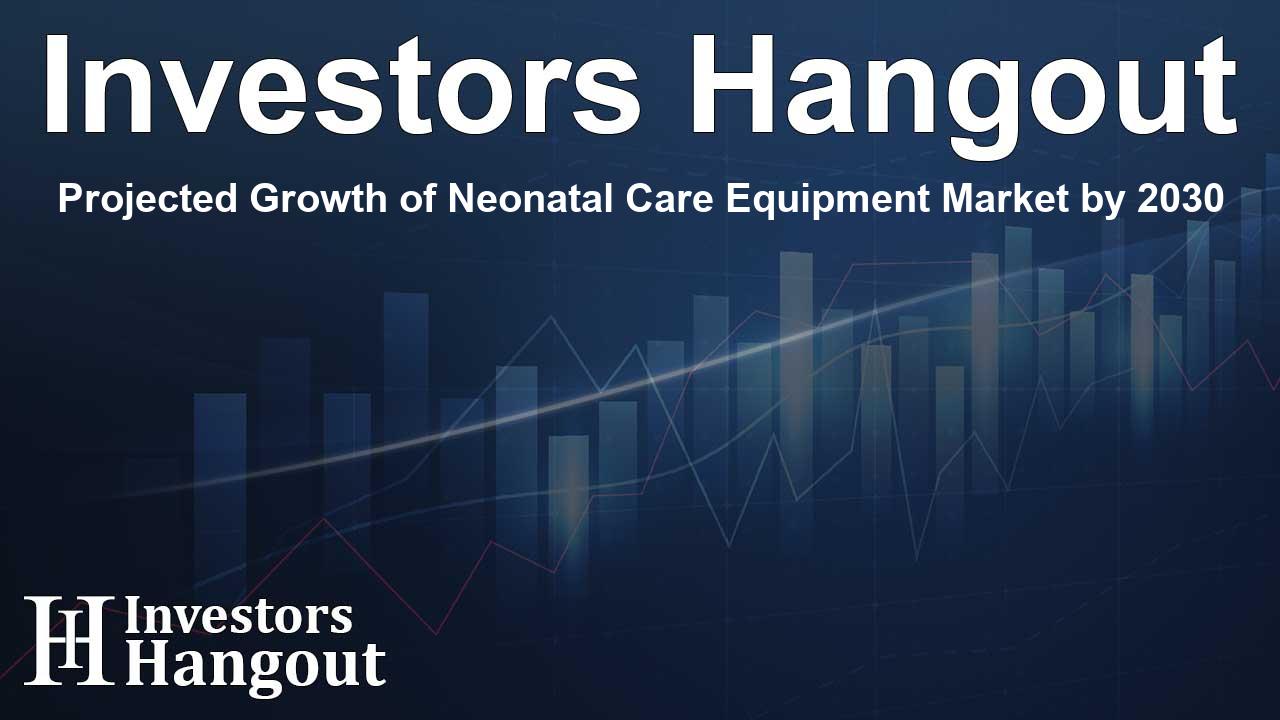Projected Growth of Neonatal Care Equipment Market by 2030

Growth of the Neonatal Care Equipment Market
The global neonatal care equipment market is on a significant growth trajectory, projected to reach a remarkable value of $2.84 billion by the end of the forecast period. This impressive growth rate, anticipated to be around 5.6% CAGR from 2025 to 2030, is fueled by various factors including rising preterm birth rates and enhanced neonatal technologies. Additionally, increasing government initiatives aimed at reducing infant mortality rates and boosting investments in neonatal intensive care unit (NICU) infrastructure are contributing to this robust growth.
Market Drivers and Challenges
The demand for neonatal care equipment is primarily driven by a greater awareness regarding neonatal health and rising investments in healthcare. Incubators, ventilators, and monitoring systems are at the forefront of this market, as more healthcare facilities recognize their importance in managing premature births and high-risk deliveries. However, the market face challenges such as high equipment costs and restricted access in low-income regions. Moreover, complex regulatory requirements pose further obstacles to growth. Additionally, there is a notable trend towards the use of refurbished equipment in cost-sensitive markets, which affects the adoption rates of new, cutting-edge technologies in emerging economies.
Market Segmentation
The neonatal care equipment market can be segmented into various categories based on product types and end users. Products include neonatal incubators, respiratory care devices, convertible warmers & incubators, phototherapy equipment, diagnostic imaging components, infant warmers, and various other care equipment. Among these products, technological innovations have led to the creation of versatile incubators that can alternate between closed and open modes, enhancing convenience and infection control while also improving neonatal outcomes.
End User Insights
When looking at the end users of this equipment, hospitals—particularly pediatric and general hospitals—command the largest share. The need for comprehensive emergency obstetric and surgical care requires specialized neonatal equipment, especially following emergency C-sections and premature births. This increasing demand in general hospitals serves as a catalyst for market growth.
Geographic Market Performance
Geographically, a significant concentration of Level III and IV NICUs is found in urban and academic hospitals. These facilities are generally equipped with state-of-the-art monitoring systems, smart respiratory devices, and hybrid warmers-incubators, all of which contribute to the market's overall value and accessibility.
Leading Companies in the Market
Several prominent players are driving innovation in the neonatal care equipment market. These include Drägerwerk AG & Co. KGaA, GE Healthcare, Koninklijke Philips N.V., and Medtronic, among others. Each of these companies has employed various growth strategies such as product launches, acquisitions, and market expansions to enhance their position within the industry.
GE Healthcare's Contributions
In particular, GE Healthcare stands out as a leading manufacturer known for a comprehensive product portfolio that includes advanced incubators and ventilators. Their integration of artificial intelligence and data analytics into neonatal monitoring systems positions them as a desirable choice among healthcare providers. This continuous investment in research and development ensures they remain at the forefront of the neonatal care equipment market.
Drägerwerk and Koninklijke Philips
Drägerwerk AG & Co. KGaA specializes in neonatal respiratory products and user-friendly solutions that enhance patient safety. Meanwhile, Koninklijke Philips N.V. is recognized for inventing advanced monitoring systems tailored for neonatal care, emphasizing innovations in non-invasive respiratory support. These leading companies are committed to improving outcomes in neonatal care through state-of-the-art technological advancements.
Future Outlook
As awareness of neonatal health continues to rise and the demand for advanced technological solutions grows, the neonatal care equipment market is poised for significant development. Organizations are urged to continue investing in research and infrastructure that supports innovative solutions that can improve outcomes for vulnerable infants. The combination of increased public awareness, technological advancements, and supportive government initiatives will likely result in robust market performance and sustained growth in the coming years.
Frequently Asked Questions
What is the projected value of the neonatal care equipment market by 2030?
The neonatal care equipment market is projected to reach $2.84 billion by the end of the forecast period.
What are the primary drivers of market growth?
Key drivers include rising preterm birth rates, advancements in technology, and government initiatives aimed at reducing infant mortality rates.
Who are the leading players in the neonatal care equipment market?
Leading players include Drägerwerk AG & Co. KGaA, GE Healthcare, and Koninklijke Philips N.V.
What are the challenges faced by the neonatal care equipment market?
The market faces challenges such as high equipment costs, limited access in low-income areas, and complex regulatory requirements.
How does geography impact the market's performance?
Urban and academic hospitals with Level III and IV NICUs tend to have advanced monitoring systems, contributing to higher market values.
About The Author
Contact Henry Turner privately here. Or send an email with ATTN: Henry Turner as the subject to contact@investorshangout.com.
About Investors Hangout
Investors Hangout is a leading online stock forum for financial discussion and learning, offering a wide range of free tools and resources. It draws in traders of all levels, who exchange market knowledge, investigate trading tactics, and keep an eye on industry developments in real time. Featuring financial articles, stock message boards, quotes, charts, company profiles, and live news updates. Through cooperative learning and a wealth of informational resources, it helps users from novices creating their first portfolios to experts honing their techniques. Join Investors Hangout today: https://investorshangout.com/
The content of this article is based on factual, publicly available information and does not represent legal, financial, or investment advice. Investors Hangout does not offer financial advice, and the author is not a licensed financial advisor. Consult a qualified advisor before making any financial or investment decisions based on this article. This article should not be considered advice to purchase, sell, or hold any securities or other investments. If any of the material provided here is inaccurate, please contact us for corrections.
